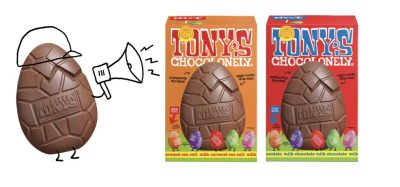What is natural food?
- Like
- Digg
- Del
- Tumblr
- VKontakte
- Buffer
- Love This
- Odnoklassniki
- Meneame
- Blogger
- Amazon
- Yahoo Mail
- Gmail
- AOL
- Newsvine
- HackerNews
- Evernote
- MySpace
- Mail.ru
- Viadeo
- Line
- Comments
- Yummly
- SMS
- Viber
- Telegram
- Subscribe
- Skype
- Facebook Messenger
- Kakao
- LiveJournal
- Yammer
- Edgar
- Fintel
- Mix
- Instapaper
- Copy Link
Posted: 17 October 2022 | | No comments yet
Natural is an increasingly sought-after characteristic yet incredibly difficult to define in the food industry. So then, what exactly constitutes natural food? New Food’s Grace Galler investigates…


What is a ‘natural’ food product? Depending on who you ask you’ll likely receive a different answer. As regulators, processors, manufactures and consumers question the semantics of natural, New Food takes this opportunity to investigate whether this term can be assigned to one, simple definition.
What does natural food mean?
The US Food and Drug Administration (FDA) has previously commented on how natural is a difficult term to define, especially in the food industry. Despite this, the Administration has concluded that natural in human food labelling is when nothing artificial or synthetic (including all colour additives, regardless of source) has been included in, or added to, a food that it would not normally be expected in.
In the UK, the Food Standards Agency (FSA) defines ‘natural’ food as being “comprised of natural ingredients”, for example, those “produced by nature, not the work of man or interfered with by man”.
It also states within its guidance: “It is misleading to use the term to describe foods or ingredients that employ chemicals to change their composition or comprise the products of new technologies, including additives and flavourings that are the product of the chemical industry or extracted by chemical processes.”
As for the dictionary definition, it reads as something that is derived from or existing in nature and not made or caused by humankind.
Semantics of natural
There are a few words that have been linked with natural, so when exploring its definition, it makes sense to examine these too. These are ‘organic’ and ‘clean label’.
Organic vs. natural
According to a US study, one in three consumers do not distinguish between ‘natural’ and ‘organic’, so does that mean they’re the same? Can organic foods be described as natural?
According to the Mayo Clinic, organic foods and natural foods are completely different things. Staff at the clinic have stated on the website that “usually, natural on a food label means that the product has no artificial colours, flavours or preservatives”. Whereas, natural on a label is not necessarily associated with the “methods or materials used to grow the food ingredients”.
Furthermore, Defra states that in order to label a product as ‘organic’, at least 95 percent of the product’s agricultural ingredients must be organic and all other ingredients, additives and processing aids must be listed as permitted within organic regulations.
Organic food should also avoid the use of human-made fertilisers, pesticides, growth regulators and livestock feed additives. So there are similarities which can be drawn between the two words – organic and natural.
Despite the Organic & Natural Health Association finding that organic and natural are not differentiated by some consumers, it found that, of those surveyed, they were more likely to use ‘natural’ foods over ‘organic’ ones. Sixty percent of survey respondents reported that that they used organic products less than once a week, while more than a third claimed to use natural products at least once a day.
The popularity of organic foods has been rising up until just recently, with the ADHB reporting declines in sales this year. This is most likely linked with inflation and could mean that consumers are more likely to prioritise the purchase of cheaper foods over ones associated with health (and often higher price points).
Natural vs. clean label
Clean label – a consumer driven movement, in which foods/drink are made with recognised and shorter ingredient lists – has also been associated with the term natural. Although you’ll find industry folk attaching meaning to clean label, it doesn’t have an official or clear definition.
The Clean Label Project, a national non-profit looking to “bring truth and transparency to food and consumer product labelling” sees ‘clean’ products as those which place an emphasis on purity and surpass the minimum regulations required by FDA. Again, words that could be linked to natural. The Clean Label Project does not provide an exact meaning of the word natural on its website, but it does air its belief that its description should be “consistent across all aisles of a grocery store” and that “synthetic and chemical ingredients are in no way ‘natural’”.
Can natural food be processed?
So the definition between regulators and associations (and the dictionary!) are fairly similar. But the point in which natural becomes more interesting – and up for debate – is when we bring processing into the mix.
During a discussion on ‘What is natural?’ at London’s Future-Food Tech conference, Miriam Ueberall, Vice President and R&D International at Kraft Heinz, described Heinz Ketchup as fitting the criteria. The argument here is that it contains five “grown not made” ingredients (red ripe tomatoes, vinegar, sugar, salt and spices) and has “absolutely no artificial colours, flavours, preservatives or thickeners”. Interestingly, these are classic traits of clean label.
However, some may contest that to make the aforementioned ketchup, numerous production steps are required in order for it to reach consumer shelves. With that in mind, does this mean it is no longer natural?
“[Natural] doesn’t mean a product can’t be processed. Of course it can, and it has to be,” Ueberall told New Food.
The view that Ueberall is expressing is linked to the difference between minimally processed and ultra-processed, and is a topic New Food has explored previously. Almost everything we eat is processed to some degree – it’s just to what level that we need to take note of. In other words, unless you’ve grown an apple from a tree in your garden, the apples in the supermarket will be processed.
The authenticity of product replicas
Infant formula made in the lab
During the debate around natural, the topic of infant nutrition was raised, with speakers questioning the authenticity of formula made to replicate breast milk.
Although speakers from another talk at the same event (Infant nutrition and formula: feeding the next generation) unanimously declared that “breast is best” when it comes to feeding babies, it is evident there are certain situations where breast feeding is not possible. As such, formulas are being reformulated and refined to mimic this natural food source for babies as not just a way of progressing from breast to bottle, but as an equally nutritious replacement (that’s the goal anyway).
The panellists explained that we now have the tools to imitate any natural ingredient synthetically in the lab, but would this still mean they maintain the natural seal of approval?
Using natural ingredients with genetically similar components to those found in breast milk, infant formula companies are hoping that parents will accept their alternative source of nutrition as both functional and trustworthy.
GMOs and GEs
Additionally, the natural status of genetically modified organisms (GMOs) is up for debate. GMOs are living organisms whose genetic material has been artificially manipulated in a laboratory through genetic engineering.
GMOs allow plant, animal, bacteria and virus genes to be created that would otherwise not be formed in nature. So does the ‘lab growth stage’ mean that they are not natural?
Importantly, there is a difference between GMOs and the more recent mechanism for crop improvement: gene editing (GE). Alliance For Science separates GE from GMOs by confirming that “gene editing tools are used to generate changes to the native genetic material”.
Whilst GMOs introduce novel configurations of genetic materials which are typically derived from other organisms, GE tools modify existing genetic materials in order to improve yield, quality or other outcomes. However, like GMOs, GE is not free of consumer concern.
Nigel Halford, Principle Research Scientist at Rothamsted Research told New Food: “No modern crops could be described as natural because they are the product of over a century of scientific plant breeding and many centuries of selection by farmers before that. However, it is true to say that the sorts of mutations induced by at least the basic use of genome editing are indistinguishable from those that occur naturally.”
Thus, GE has the power to produce crops that are genetically indistinguishable from crops carrying mutations that have arisen naturally. Therefore, consumers may be wrongly associating lab production with an ‘unnatural’ status.
Conversely, Heike Moldenhauer, Secretary General of the European Non-GMO Industry Association (ENGA) told New Food that since nature does not use labs and petri dishes, “GE or GMOs cannot be classed as natural” and are “always a product of human intervention.”
Stating the importance of GE foods in today’s world, Paul B. Thompson from the Purdue University Department of Philosophy Joyce and Edward E. Brewer Distinguished Professor in Applied Ethics stated that “part of the anxiety about genetically engineered foods is that our view of how the world works is eroding away from underneath our feet”.
They added; “It’s a shame that this anxiety has been attached so strongly to genetically engineered foods, because the feeling really exists in many areas of life.”
Meanwhile, studies have found that many plants are naturally GMO. Whilst many believe that the process of moving genes from one species to another is unnatural, research has found that one in 20 flowering plants are naturally transgenic. These include supermarket favourites such as bananas, peanuts and hops, all of which contain the Agrobacterium microbe — the same bacterium that scientists typically use to create GM crops.
Getting ‘natural’ right – what consumers want
It is important that companies take the time to consider the definition of ‘natural’ and all that it encompasses. Today, more than ever, consumers are engaging with product labels and asking more questions about the food they consume. If a product cannot prove it is natural, yet claims to be, consumers will soon find out.
Transparency and honesty were qualities Ueberall noted as vital in her address, as she explained the importance of brands being open about their food’s journey and how it’s been made.
Looking towards the future, the aforementioned panel (What is natural?) forecasted that there will be a switch back to consumers desiring wholefood products rather than overly processed foods. Wholefood products are those that are either not processed at all or minimally processed. They are sold as close to their natural form as possible and often contain many vitamins, minerals, fibres and antioxidants.
Although ‘natural’ is a tricky claim to navigate and arguably open to interpretation, our foods go through processing for a reason – to ensure they are safe for consumption. So in today’s world, ‘natural’ may no longer have the scope to be synonymous with raw. One could say that nothing is natural as a result, or, conversely, that the meaning has – like words do all the time – evolved.
We’re likely to see more lab formulated and genetically engineered foods hitting the market in the next few years as the industry seeks to address challenges such as climate change. And whether you regard them as ‘natural’ or not, it doesn’t necessarily mean these new ways of making food are bad for us.
What are your thoughts on natural? Comment below and tell us your definition.
Related topics
Related organisations
Clean Label Project, European Non-GMO Industry Association (ENGA), Food and Drug Administration (FDA), Food Standards Agency (FSA), Kraft Heinz, Rothamsted Research
Related regions
Related people
Heike Moldenhauer, Miriam Ueberall, Nigel Halford, Paul B. Thompson







